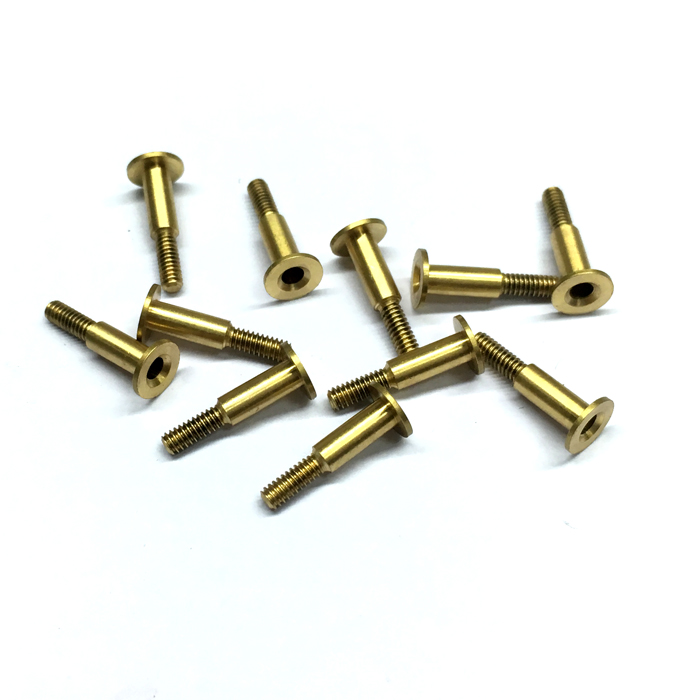Brass CNC Machining: Precision and Versatility in Manufacturing
2025-04-18
In the world of precision manufacturing, the ability to create detailed and high-quality parts is essential. Brass CNC machining is one such process that provides manufacturers with a powerful solution for producing intricate components with excellent durability and precision. From aerospace and automotive industries to medical devices and electronics, brass CNC machining has become a staple in producing components that demand both strength and aesthetic appeal.
What is Brass CNC Machining?
Brass CNC machining refers to the use of Computer Numerical Control (CNC) machines to shape and cut brass material into specific components or products. CNC machines are automated tools that operate based on pre-programmed computer software. This allows for highly accurate and repeatable production of complex parts from solid brass.
Brass, a metal alloy primarily composed of copper and zinc, is known for its excellent machinability, corrosion resistance, and conductivity. These characteristics make it ideal for a variety of applications where both performance and appearance matter.
Why Choose Brass for CNC Machining?
Brass offers several advantages that make it an ideal material for CNC machining:
1. Machinability: Brass is relatively easy to machine compared to other metals, allowing for fine, detailed cuts without excessive tool wear.
2. Corrosion Resistance: Brass is highly resistant to rust and corrosion, making it perfect for use in environments exposed to moisture or chemicals.
3. Durability: Brass parts are strong and durable, able to withstand mechanical stress while maintaining their structural integrity.
4. Aesthetic Quality: Brass has a distinct golden appearance, making it popular in products where aesthetics are important, such as jewelry, musical instruments, and decorative hardware.
5. Electrical Conductivity: Brass is a good conductor of electricity, which makes it suitable for applications in electrical and electronic components.
Applications of Brass CNC Machining
Brass CNC machining is used in a wide variety of industries due to its versatility and the benefits of the material itself. Some common applications include:
- Aerospace: Brass is used in the aerospace industry for manufacturing components that require precise engineering, such as fittings, bushings, and valves. Its lightweight and durable nature makes it an ideal choice for this sector.
- Automotive: Brass is often used in automotive components like connectors, fittings, and hydraulic systems. Its resistance to corrosion and high-temperature performance are key benefits.
- Medical Devices: Brass’s biocompatibility and resistance to corrosion make it a go-to material for producing parts like connectors, surgical instruments, and valve components for medical equipment.
- Electronics: Brass is used in electrical connectors, switches, and housings due to its conductivity and ability to be precisely machined for intricate parts.
- Decorative Products: Brass is widely used in making decorative components like hardware, trophies, and coins, thanks to its attractive appearance and ability to be easily polished.
The CNC Machining Process
The process of CNC machining involves several steps, all of which are controlled by a computer to ensure precision:
1. Design: The first step is designing the part in a CAD (Computer-Aided Design) program. This design is then translated into instructions that guide the CNC machine.
2. Programming: The design data is loaded into the CNC machine’s computer, where it is converted into specific commands that dictate the movements of the cutting tools.
3. Cutting and Shaping: The CNC machine then uses a variety of tools (mills, lathes, drills, etc.) to remove material from the brass workpiece and shape it into the desired form.
4. Finishing: After the part has been machined, it may undergo additional finishing processes like polishing, coating, or heat treating to improve its appearance or performance.
Benefits of CNC Machining for Brass Parts
There are several compelling reasons to choose CNC machining when working with brass:
- Precision: CNC machines provide unparalleled accuracy, producing parts with tight tolerances and intricate details that would be difficult to achieve manually.
- Repeatability: Once a design is created, CNC machining can consistently produce identical parts in large quantities, ensuring uniformity and high quality.
- Efficiency: CNC machining is faster and more efficient than traditional machining methods, reducing production time and labor costs.
- Flexibility: With CNC, it's easy to make adjustments to designs and produce prototype parts quickly, allowing for faster product development.
Conclusion
Brass CNC machining is an essential process in the manufacturing of precision parts across many industries. Its ability to produce high-quality, durable, and aesthetically pleasing components makes it a preferred choice for applications ranging from automotive to electronics and decorative goods. The combination of brass’s excellent properties and the precision of CNC technology ensures that manufacturers can meet the growing demand for complex, high-performance components.



